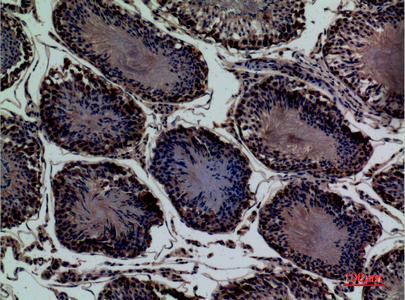产品名称
CD203c Rabbit Polyclonal Antibody
别名
ENPP3; PDNP3; Ectonucleotide pyrophosphatase/phosphodiesterase family member 3; E-NPP 3; Phosphodiesterase I beta; PD-Ibeta; Phosphodiesterase I/nucleotide pyrophosphatase 3; CD203c
蛋白名称
Ectonucleotide pyrophosphatase/phosphodiesterase family member 3
存储缓冲液
Liquid in PBS containing 50% glycerol, 0.5% BSA and 0.02% New type preservative N.
Human Gene Link
http://www.ncbi.nlm.nih.gov/sites/entrez?db=gene&term=5169
Human Swissprot No.
O14638
Human Swissprot Link
http://www.uniprot.org/uniprotkb/O14638/entry
Mouse Gene Link
http://www.ncbi.nlm.nih.gov/sites/entrez?db=gene&term=209558
Mouse Swissprot No.
Q6DYE8
Mouse Swissprot Link
http://www.uniprot.org/uniprot/Q6DYE8
Rat Gene Link
http://www.ncbi.nlm.nih.gov/sites/entrez?db=gene&term=54410
Rat Swissprot Link
http://www.uniprot.org/uniprot/P97675
免疫原
The antiserum was produced against synthesized peptide derived from the Internal region of human ENPP3. AA range:281-330
特异性
CD203c Polyclonal Antibody detects endogenous levels of CD203c protein.
稀释度
WB 1:500 - 1:2000. IHC-p: 1:100-300 ELISA: 1:20000.. IF 1:50-200
宿主
Polyclonal, Rabbit,IgG
背景介绍
The protein encoded by this gene belongs to a series of ectoenzymes that are involved in hydrolysis of extracellular nucleotides. These ectoenzymes possess ATPase and ATP pyrophosphatase activities and are type II transmembrane proteins. Expression of the related rat mRNA has been found in a subset of immature glial cells and in the alimentary tract. The corresponding rat protein has been detected in the pancreas, small intestine, colon, and liver. The human mRNA is expressed in glioma cells, prostate, and uterus. Expression of the human protein has been detected in uterus, basophils, and mast cells. Two transcript variants, one protein coding and the other non-protein coding, have been found for this gene. [provided by RefSeq, Oct 2015],
组织表达
Detected on bile ducts in liver, and in blood serum (at protein level) (PubMed:15072822). Detected in prostate and uterus (PubMed:9344668). Detected on basophils, but not neutrophils (PubMed:11342463).
细胞定位
Cell membrane ; Single-pass type II membrane protein . Apical cell membrane ; Single-pass type II membrane protein . Secreted . Detected at the cell surface of basophils (PubMed:11342463). Detected at the apical plasma membrane of bile duct cells (PubMed:15072822). Located to the apical surface in intestinal and kidney epithelial cells. Secreted in serum, and in lumen of epithelial cells. .
信号通路
Purine metabolism;Starch and sucrose metabolism;Riboflavin metabolism;Nicotinate and nicotinamide metabolism;Pantothenate and CoA biosynthesis;
功能
catalytic activity:A dinucleotide + H(2)O = 2 mononucleotides.,catalytic activity:Hydrolytically removes 5'-nucleotides successively from the 3'-hydroxy termini of 3'-hydroxy-terminated oligonucleotides.,cofactor:Binds 2 divalent metal cations per subunit.,enzyme regulation:At low concentrations of ATP, a phosphorylated active site intermediate is formed which inhibits further ATP hydrolysis.,function:Cleaves a variety of phosphodiester and phosphosulfate bonds including deoxynucleotides, nucleotide sugars, and NAD.,induction:Up-regulated by stimulation by allergen or by cross-linking with IgE. The IgE-mediated activation is enhanced by tetradecanoyl phorbol acetate (TPA), a stimulator of the PKC pathway, and inhibited by the P13 kinase inhibitors, LY294002 and wortmannin. Up-regulated in invasive bile duct cancers.,PTM:It has been suggested that the active SMB domain may be permitted considerable disulfide bond heterogeneity or variability, thus two alternate disulfide patterns based on 3D structures are described with 1 disulfide bond conserved in both.,PTM:N-glycosylation is necessary for correct trafficking to the apical surface, but is not the apical targeting signal.,similarity:Belongs to the nucleotide pyrophosphatase/phosphodiesterase family.,similarity:Contains 2 SMB (somatomedin-B) domains.,subcellular location:Located to the apical surface in intestinal and kidney epithelial cells. Located to the cell surface of basophils, and to the apical plasma membrane of bile duct cells. Secreted in serum, and in lumen of epithelial cells.,tissue specificity:Expressed in bile ducts, prostate, uterus and colon. Exclusively expressed on basophils, mast cells and their progenitors.,
纯化
The antibody was affinity-purified from rabbit antiserum by affinity-chromatography using epitope-specific immunogen.

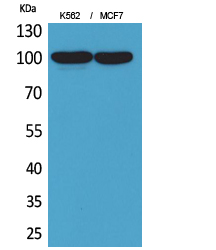
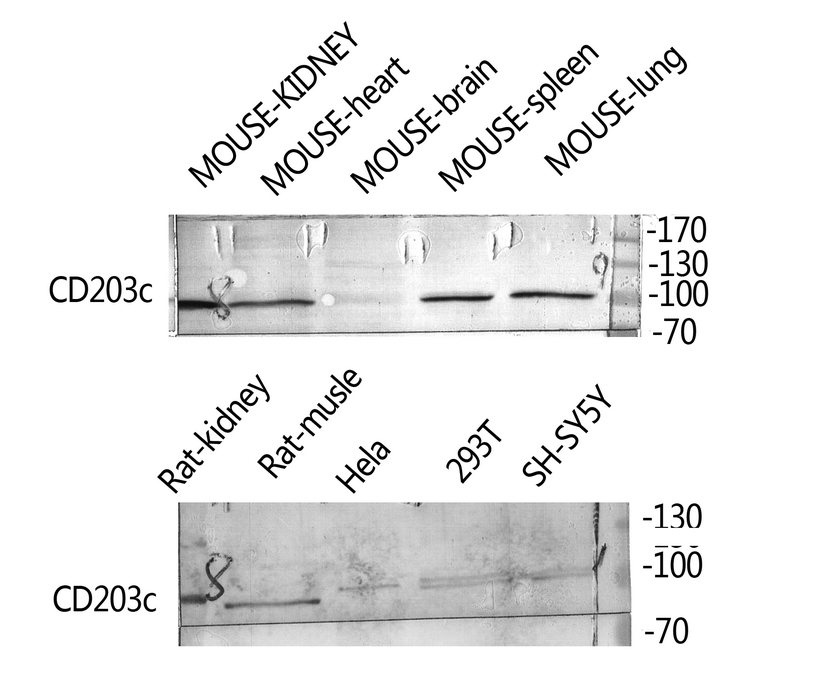
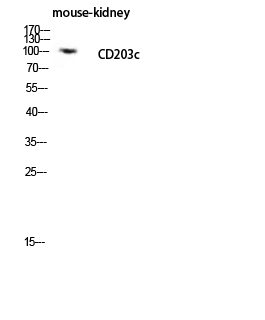
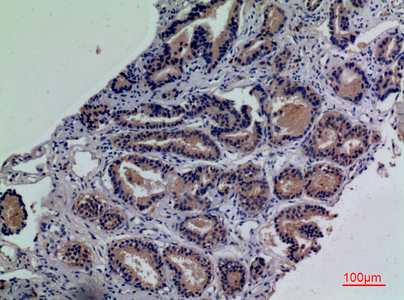
.jpg)
